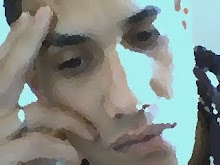A bunion is easily identified on a foot. It has the appearance of a protrusion or bump on the side of a toe. The affected big toe tends to lean towards the small toes. If the condition is not severe, it can be treated using non-surgical methods. However, if these methods fail, it is time to think about getting bunion surgery San Francisco.
Bunions are bony bumps of bone and/or tissue that have formed on the side of the toe. They are usually the result of a misalignment of bone and even additional bone growth. They usually occur on a big toe, but they can also appear on a small toe. They can turn red and be quite painful. They will tend to get worse with time if not treated.
This affects many more women than men. Genetics is a big contributor to having this condition. If you have immediate family members with this condition, you are much more likely to suffer with bunions as well. However, they can be the result of an injury to the foot like a sprain. Shoes do not cause them, however, wearing shoes that are ill-fitting can worsen the condition.
Most people try a non-surgical solution first. This can include things like wearing a wider shoe. Placing a pad over the affected area has been helpful for some patients. Others find relief with anti-inflammatory medication. Some find a shot of cortisone helps to relieve the pain. When these do not work, surgery is often the next step.
When the surgeon is first consulted, he will take your medical history. He will then examine the foot to examine its anatomy. X-rays will then be taken. The doctor can then evaluate whether an operation is needed.
An operation on bunions is a bunionectomy. Its purpose is to correct the deformities and ultimately to relieve the foot pain. Before the operation begins, you will receive a sedative and a regional anesthesia. The doctor then cuts along the side or top of the affected toe. He then removes or realigns the bumpy bone and tissue. If your case is severe, he may have to use reinforcement with pins, wires, or screws. The work done depends on your individual situation. Normally, the operation takes approximately one hour. In most cases it will be done as an outpatient procedure.
Recovery time is based on how severe the problem was. It can vary from 6 weeks up to 6 months. Stitches are usually removed from a period of 7 to 21 days. Outside screws or pins are taken out after 3 to 6 weeks. The patient is required to wear either special shoes or a walking cast for a time period of up to 8 weeks. If the case is very severe, the patient may not be allowed to put any weight on the foot for up to 8 weeks. The more severe the case, the longer the recovery time.
Bunions can reoccur. However, if you wear the right kind of shoe, this is less likely to happen. Be sure to get a fully qualified surgeon. When ready, be sure to get bunion surgery San Francisco.
Bunions are bony bumps of bone and/or tissue that have formed on the side of the toe. They are usually the result of a misalignment of bone and even additional bone growth. They usually occur on a big toe, but they can also appear on a small toe. They can turn red and be quite painful. They will tend to get worse with time if not treated.
This affects many more women than men. Genetics is a big contributor to having this condition. If you have immediate family members with this condition, you are much more likely to suffer with bunions as well. However, they can be the result of an injury to the foot like a sprain. Shoes do not cause them, however, wearing shoes that are ill-fitting can worsen the condition.
Most people try a non-surgical solution first. This can include things like wearing a wider shoe. Placing a pad over the affected area has been helpful for some patients. Others find relief with anti-inflammatory medication. Some find a shot of cortisone helps to relieve the pain. When these do not work, surgery is often the next step.
When the surgeon is first consulted, he will take your medical history. He will then examine the foot to examine its anatomy. X-rays will then be taken. The doctor can then evaluate whether an operation is needed.
An operation on bunions is a bunionectomy. Its purpose is to correct the deformities and ultimately to relieve the foot pain. Before the operation begins, you will receive a sedative and a regional anesthesia. The doctor then cuts along the side or top of the affected toe. He then removes or realigns the bumpy bone and tissue. If your case is severe, he may have to use reinforcement with pins, wires, or screws. The work done depends on your individual situation. Normally, the operation takes approximately one hour. In most cases it will be done as an outpatient procedure.
Recovery time is based on how severe the problem was. It can vary from 6 weeks up to 6 months. Stitches are usually removed from a period of 7 to 21 days. Outside screws or pins are taken out after 3 to 6 weeks. The patient is required to wear either special shoes or a walking cast for a time period of up to 8 weeks. If the case is very severe, the patient may not be allowed to put any weight on the foot for up to 8 weeks. The more severe the case, the longer the recovery time.
Bunions can reoccur. However, if you wear the right kind of shoe, this is less likely to happen. Be sure to get a fully qualified surgeon. When ready, be sure to get bunion surgery San Francisco.


